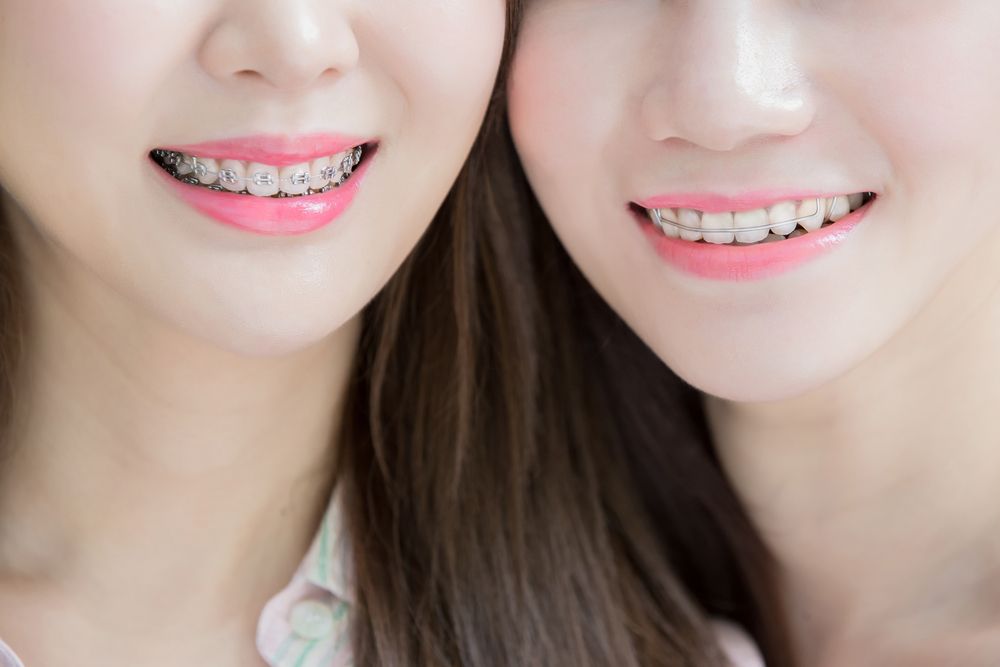
Why Do I Need an Orthodontic Retainer?
To understand why a retainer is essential after your braces come off, we should begin by exploring how the body reacts to braces during treatment. Specifically, I want to tell you about bone remodeling.
Whether you wear traditional braces or Invisalign, constant forces are responsible for the movement of your teeth. When brackets and archwires apply consistent pressure on a tooth, the bone around the tooth’s root begins to remodel, or change shape, to allow each tooth and its socket to move. As bone resorbs where teeth moved to, it forms anew where teeth moved from. This is bone remodeling.
The constant force is absent after treatment ends, so bone remodeling slows or stops, allowing teeth to reside in their new, ideal positions. However, remodeling won’t stop immediately. Additionally, forces of any type can prompt bone remodeling to begin again.
At the completion of orthodontic therapy, bone continues remodeling. A compliant patient will wear his orthodontic retainer all day and night, except during meals and when cleaning the retainer and teeth. Continual retainer wear is advised for the first few months post-treatment because it, in essence, tells the body, “Okay, these teeth are in the right spot. No more pressure.” Your body finally gets the message within about two months of constant retainer wear.
In the past, orthodontists advised patients to wear a retainer at night for a few years (or a timeframe equal to treatment time). Today, however, with a better understanding of bone remodeling, orthodontists usually recommend that patients wear a retainer for life to keep teeth in proper alignment.
The good news is that wearing a retainer isn’t like wearing fixed braces. It’s much easier.
About Orthodontic Relapse
When a patient doesn’t wear his retainer for a week or two, it might feel tight when placed on the teeth. This indicates that teeth began to move when the retainer was absent. It’s a wake-up call that wearing a retainer is imperative to retaining orthodontic treatment results.
Not all teeth relapse. In general, the more crooked teeth were before treatment, the higher the chance of relapse. The most common situations for orthodontic relapse are with open bite cases, in lower molars, and for rotated teeth.
Relapse is more likely to occur when pressures are emitted on teeth or when extra space allows for easy tooth movement. This happens in cases of:
- Bruxism (teeth grinding)
- Third molar eruption/movement/extraction
- Tooth loss
- Latent lower jaw (mandible) growth
- Gum weakness
- Genetic predisposition
- Aging (mainly for lower front teeth)
- Mouth breathing (often caused by enlarged adenoids and tonsils)
- Tongue thrusting (when swallowing)
- Sucking on things
Remember, though, that in the simple act of eating food, our teeth endure 70 pounds of pressure per square inch, so pressures are part of the daily life of teeth. A retainer eliminates the potential for any type of pressure to cause tooth movement. (Spacers or tooth replacement eliminates the potential for open spaces to allow for dental shifting.)
Types of Orthodontic Retainers
Bonded Retainer (Permanent)
A bonded retainer is a metal wire permanently adhered to the back of teeth after orthodontic therapy. Bonded retainers are fixed (not removable, except by a dentist). You won’t have to worry about forgetting to wear, losing, or breaking your retainer, or neglecting to wear it on purpose.
For people who travel, aren’t disciplined, or who know they just won’t willingly wear a retainer, a bonded retainer is a great option.
Removable Retainer
A removable retainer relies upon the patient choosing to wear it. For best results, wear your removable retainer all night long, every night. If it ever feels uncomfortable, call the orthodontist to see if the appliance needs repair or adjustment.
Let’s Talk About Your Retainer
If you don’t wear an orthodontic retainer after treatment, your teeth may relapse. To get teeth back into proper alignment, you will need to undergo some form of orthodontic treatment again. This means additional expense, time, and hassle. Avoid relapse!
Call Harmony Orthodontics in Tomball, TX, today at 832-699-3683. Dr. Wint W. Tun will provide options for retainers that will keep your teeth in alignment long term.